How a hurricane and a cardinal launched a UVM professor on a new career path
| Published: 04-20-2024 5:18 PM |
Before Hurricane Katrina hit her newly adopted city of New Orleans in 2005, Trish O’Kane knew next to nothing about the environment — let alone birds.
O’Kane had spent much of her life working as an investigative human rights journalist in Central America and a hate crimes researcher in Montgomery, Ala.: “Homo sapiens 24/7,” she described it in a recent interview. But the environmental catastrophe — which completely destroyed her and her neighbors’ homes and belongings — set the journalism professor on a wildly different path.
Now a self-described “bird evangelist,” O’Kane has a doctorate in environmental studies and does something she never imagined: She teaches about birds. Her popular service-learning course at The University of Vermont pairs college students with grade school students to learn about birds and explore the outdoors.
O’Kane’s memoir, “Birding to Change the World,” published at the end of February, recounts her experience of returning to school to learn about the natural world, which, in turn, led her into local politics, education and activism. In an interview with VTDigger, she described it as a “story of recovering from grief, of recovering from climate chaos disaster and finding a better, more joyful path forward.”
The bird that changed everything for O’Kane, as she recalls it, was a cardinal in a bush.
It was January 2006 in a changed New Orleans. The university where O’Kane had just started teaching journalism was reopening after a semester off, and O’Kane was renting a room since her home had been destroyed. She woke up on a Monday to an uncannily quiet city.
“Where’s the traffic? Where are the people? Where are the neighbors?” she recalled thinking, quickly remembering many people had not returned to the flooded city — and many had drowned. While lying in bed thinking those grim thoughts, she heard a clicking outside in a bush.
“I looked outside the window and there was this gorgeous red cardinal,” O’Kane recounted. “I didn’t know anything about the bird. But it meant so much to me in that very sad, scared moment: that there’s this beautiful creature in my new, hurricane-trashed yard, and it’s alive and well and thriving and making beautiful sounds. That was the very beginning.”
Article continues after...
Yesterday's Most Read Articles
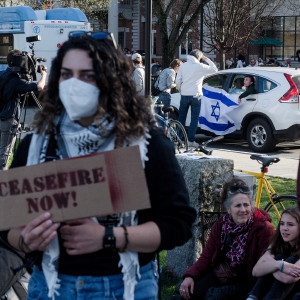 Dartmouth moves swiftly to stymie demonstration, leads to 90 arrests
Dartmouth moves swiftly to stymie demonstration, leads to 90 arrests
 Dartmouth graduate student-workers go on strike
Dartmouth graduate student-workers go on strike
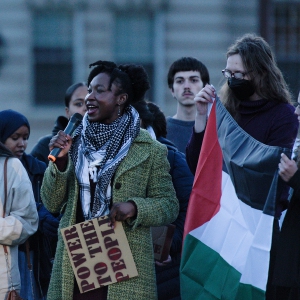 At Dartmouth, hundreds protest ongoing war in Gaza and express support for academic freedom
At Dartmouth, hundreds protest ongoing war in Gaza and express support for academic freedom
 Art Notes: City Center Ballet celebrates 25 years
Art Notes: City Center Ballet celebrates 25 years
“I think people who have been in disaster zones like in Vermont last summer will relate to this: you so desperately need to see evidence of life resurging out of the ruins,” she said. “And that’s what that bird began to mean to me, and then I kept looking at every bird I could see after that, a squirrel, whatever; anything alive in the city.”
In her UVM course, O’Kane shares with her college students and their elementary school co-explorers the same kind of magical moments she had with that first cardinal in New Orleans.
“Birds are a particularly wonderful portal for people to relate to nature because they’re accessible,” she said. “They’re everywhere. A kid in a concrete city can watch pigeons or crows or red-tailed hawks and peregrine falcons.”
O’Kane has plenty of other reasons why birds have captured her heart, as well as the hearts of many of her former students.
“They’re gorgeous. They’re miraculous. They do crazy funny things. And they’re mysterious, they’re elusive,” she said. “I mean, they’re there one minute and gone the next — and who knows? Are they nearby or have they just started a journey of thousands and thousands of miles?”
The UVM students meet once a week with just O’Kane, learning to identify birds and discussing public education, sustainability and social and environmental justice. Then they gather with students from Flynn Elementary School — located in O’Kane’s own neighborhood on Burlington’s northern edge — for a weekly afterschool session co-exploring and learning in the outdoors.
O’Kane — who first developed and taught the class in 2010 at the University of Wisconsin–Madison as part of her doctoral dissertation — stresses to her UVM students that the program is much more about the relationship they develop with the kids than birds.
“It’s walking, running, tree climbing, jumping, shouting, screaming and some birding,” O’Kane said. “Some of the kids aren’t into birds at all, and that’s totally fine. We are meeting a dire community need for kids to get outside more and go crazy and do whatever they need to do.”
And plenty of the fourth and fifth graders from Flynn do get into birds. Those who identify 30 birds with the support of their college student mentors get to keep a pair of high-end binoculars donated by the Green Mountain Audubon Society.
O’Kane also gets frequent emails from her college students about birds they start to notice in their daily lives, as she describes in her book. She brings students to see the banding of the northern saw-whet owl — the smallest owl in the Northeast — and sometimes even gets phone calls from students with “bird emergencies.” In the book, she writes about a first-year student who found a house finch that turned out to have conjunctivitis.
Since the beginning, O’Kane’s interest in birding has gone hand-in-hand with broader concerns about social justice and the environment.
O’Kane clearly remembers the moment she decided to pursue her doctorate: 40 days after Hurricane Katrina, she and her husband were allowed to visit their flooded house — which later had to be bulldozed — to salvage what they could. The water that had filled the house for three weeks left almost everything unrecognizable, but one thing was clear: all the toxins from the house and her abandoned old truck had contributed to contamination of water, air and soil.
“That’s when I realized I have no clue how to live on this planet without destroying it,” she said. “It became crystal clear to me: what we’re doing to the water, we’re doing to ourselves.”
That realization prompted O’Kane — age 45 and with no background in science — to pursue her doctorate at the University of Wisconsin-Madison.
She had no plans to work with kids, but a few years into her studies, she stumbled into creating the course she would later bring to UVM.
In her memoir, O’Kane recounts living across from Madison’s largest urban park, Warner Park, where she spent many hours “blissfully birding.” After learning the city had a plan to further develop the park, thus destroying bird habitat, she organized with her neighbors to oppose the plan. At one public meeting, she realized that a city official was “really pissed off” at her in particular.
After the meeting, O’Kane had coffee with the official who spoke about the kids living around the park in apartments without yards and the lack of environmental education programs.
“You’re just complaining,” she recalled the local leader saying to her. “Why don’t you help do something; you’re a graduate student!”
O’Kane took the message to heart.
“I had just moved there, I had never been to a public meeting, I was not a good citizen locally — I had never participated in anything local!” she said. “So here I was, showing up as this white birder enviro NIMBY protesting this plan, and I realized that this is not the way you’re supposed to do things.”
Soon after, with support from a local middle school principal, O’Kane created her birding course. The first semester, there were 13 undergrads and five middle school students who explored Warner Park together, looking for birds.
The nature club — which played a key part in the community activism to save Warner Park, and still runs today — doubled every semester for the five years O’Kane taught it.
After six years of community organizing — as well as countless interviews, archival research, and hundreds of hours of teaching that ended up forming O’Kane’s dissertation and new book — the city dropped its development plans. Today, the park has more birds and biodiversity, and eagles are nesting on a marsh island that used to be a launchpad for fireworks, O’Kane said.
While leading the after-school club in Madison, O’Kane slowly recognized — with the help of her students — that, while birding is very accessible, one’s race and background can greatly affect their experience of the activity.
Students of color shared in class that they worried about what might happen when they walked around their neighborhood with binoculars and that they experienced white people looking at them strangely “as if they didn’t belong in the park.” (Their concerns echoed fears shared in the “Birding While Black” movement, which galvanized after a white woman called police on a Black birder in New York City in 2020.)
Now, racial and social justice themes are woven throughout the course at UVM. O’Kane’s college students read about racism in Burlington and discuss books written by black birders and naturalists.
O’Kane’s course has been replicated at Brown University, and following the publication of her book, she has gotten a number of emails from people wanting to start similar programs.
“I would love to see more clubs, but it’s not easy to replicate; this isn’t just something you can throw together on the fly,” she said. “I can only do this because the school district trusts us, the parents trust us. And I don’t take that lightly; that is sacred to me.”
O’Kane said that since she started the course in 2010, the afternoon she spends with the kids has been her favorite day of the week: it’s full of magical moments, like the one she had with the cardinal in the bush.
She recounted how a few weeks ago, her current group of students was walking along the lakeshore path to the Derway Island Nature Preserve, their “marsh classroom.”
Out of nowhere, a snow squall moved in. For about 15 minutes, the elementary school students thought the weather was beautiful and magical — until they started to get wet. But then O’Kane heard the sound of a red-winged blackbird.
“I said to some of those kids, ‘That’s a new species for you,’” she recounted. “They just woke up real fast and wanted to start tearing down the path as fast as they could to get there, so I could show them these birds and they could check off that species.”

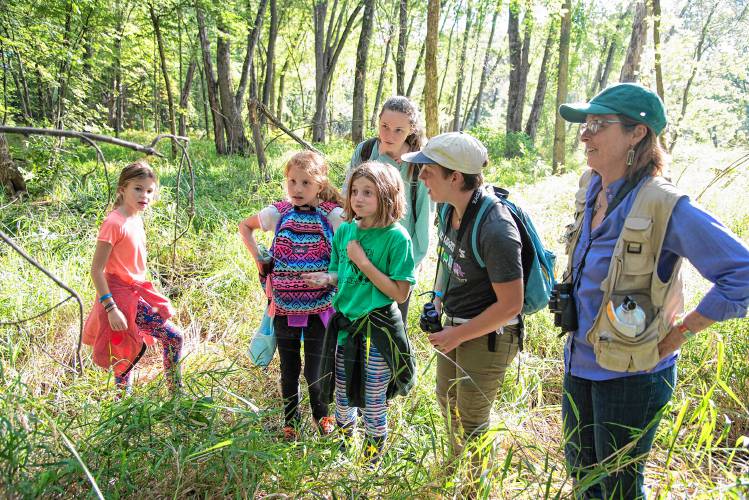
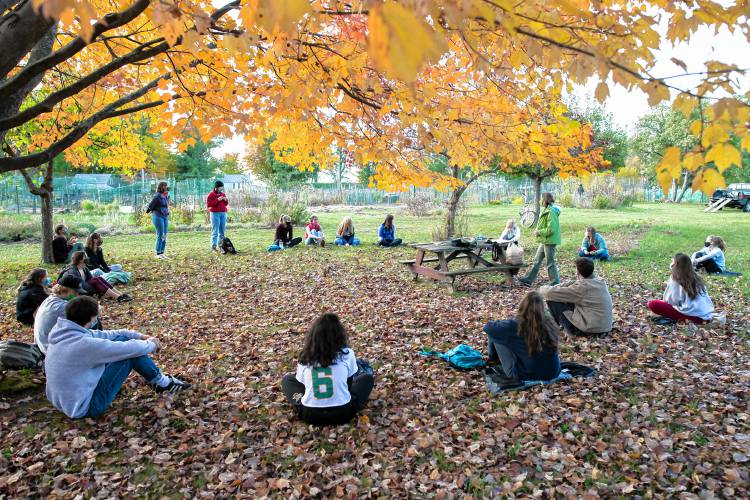
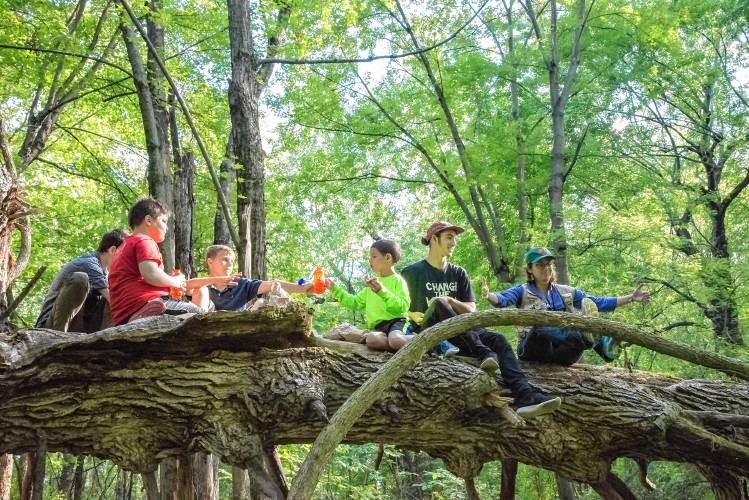
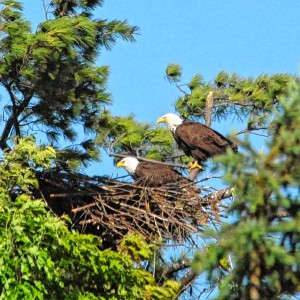 Bald eagles are back, but great blue herons paid the price
Bald eagles are back, but great blue herons paid the price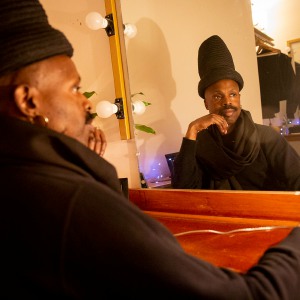 JAG Productions announces closure, citing ‘crisis facing the arts’
JAG Productions announces closure, citing ‘crisis facing the arts’
